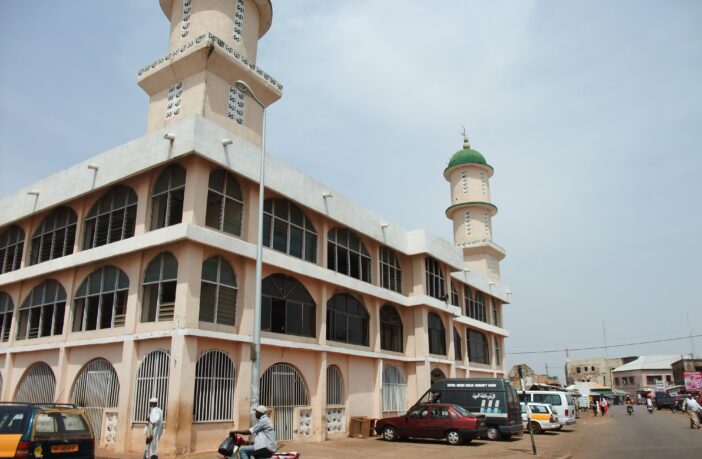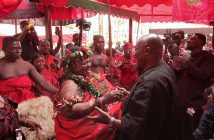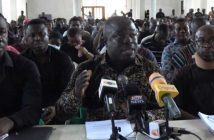At number three of the top three largest cities in Ghana, we have Tamale located in the Northern parts of the great nation Ghana.
Tamale (Dagbani : [ˈtamalɛ]), officially called Tamale Metropolitan Area, the capital city of the Northern Region of Ghana, is said to be the fastest-growing city in West Africa. Tamale is Ghana’s third-largest city, with a projected population of 950,124 according to the Tamale Metropolitan Assembly Official Website.
Most residents of Tamale are Muslims, as reflected by the multitude of mosques in Tamale, most notably the Central Mosque, Afa Ajura Mosque( Ambariyyah Mosque), and The Ahmadiyyah Muslim mission Mosque.
The local (neighbourhood) chiefs and the District Chief of Tamale are subservient to the Dagomba King in Yendi. The language of the people is Dagbani.
Due to its central location, Tamale serves as a hub for all administrative and commercial activities in the Northern Region, doubling as the political, economic and financial capital of the Northern Region. The centre of Tamale hosts regional branches of financial institutions and a considerable number of international Non-Governmental Organizations (NGOs).
Tamale has developed and transformed significantly in the last few years. The new dimension of Tamale’s development is the rush by various companies to open branches in Tamale. The hospitality industry has grown significantly, with new hotels and guest houses built around Tamale. Tamale has grown from a collection of towns where one could find an architectural blend of traditional mud houses and more modern buildings. Tamale’s new and modern facilities include the newly constructed Tamale Stadium (now Aliu Mahama sports Stadium named after late Ghana’s vice-president, Alhaji Aliu Mahama). Indeed, many improvements to Tamale’s infrastructure occurred in the period leading up to the 2008 African Cup of Nations tournament.
Upon arriving in the city, one will be quick to notice that the roads of the city are occupied with motorcycles with “mapukas” being the most patronised. This, however, does not interfere with the steady flow of traffic on the major roads of the city.
Tamale, is located on the crossing of three ancient trade routes; it started to grow as a commercial centre for the Northern region centuries ago. The north–south road from Paga and Bolgatanga to Salaga had raiders passing, whilst other merchants brought their goods into Tamale. Salt came from Daboya, to the north-west of Tamale, and followed a road that continued to Yendi. A third road linked Gushegu to the capital of the Gonja kingdom, Damongo. The present locations of the central market and the palace of the Gulkpe naa, opposite Barclays Bank and near the library, mark the junctions of the ancient roads.
Around this palace, a residential neighbourhood, now known as Dagbangdabi-Fong (the name means “Traditional men area”) began to grow. This was followed by Changli, Belipiela, and BuglanaFong (“Fetish Priest’s area”) further to the south. Each neighbourhood got its own local chief. As the distance to the marketplace grew, people started to settle elsewhere around the crossing, so the quarters of Tishigu and Abu-Abu came up. An influx of northerners from present-day Burkina Faso led to the building of Moshi Zongo. At the same time, the remote village of Vitteng came into existence.
Garden cities were brought to Tamale and at the back of Sakasaka grew Kalpohin Estates, even now a pleasant neighbourhood with plenty of trees, big gardens, and small houses.
Tamale has a mayor council government system in which the mayor is vested with extensive executive powers. The mayor is appointed by the Ghana president and approved by the town council, the Tamale Metropolitan Assembly, although suggestions have been made by the residents of Tamale to increase accountability of the office by having the mayor elected.
The name Tamale Metropolitan Assembly serves both for the local parliament and for the local executive. Local policies are always executed in this name, so for example, illegal constructions often show the command “remove by TMA” (meaning that the Tamale Metropolitan Assembly or its executive has ordered to remove the building as it is contrary to current urban land-use planning).
Tamale which is the principal centre of education in Northern Ghana currently has a total of 742 basic schools within the metropolis. This comprises 94 kindergartens, 304 primary, 112 junior high, and 14 senior high schools. The rest are technical/vocational institutions, two colleges of education, a technical university, and two other universities, one public and the other private.
The numerous trees lining the streets in this part of the town give it a tropical rainforest outlook. The University for Development Studies (UDS) has two campuses located in Tamale and one in nearby Nyankpala. The headquarters of the UDS is also located in Tamale.
There are places filled with the history of the people which tourists can visit. Some of these sites include The Dakpema Palace, the Cultural Centre, the Northern Regional Library, and the Tamale Tindana (Buglana) Palace.
Tamale is served by Tamale Airport. Located about 11 km (6 nmi; 7 mi) from downtown Tamale, the airport is mainly used by commercial airlines such as Africa World Airlines and Passion Air, as well as Starbow Airlines and Antrak Air, which run regular flights between Tamale and Accra’s Kotoka International Airport, along with other regional capitals.
Public transportation in the form of taxis used to be the most convenient means of getting around Tamale for visitors to the town until the arrival of the tri-cycles, popularly called “Mahama-Cambuu”. Mahama Cambuu is a coined name by the local people from the expression “Mahama can do”. This is because these Tri-cycles (mostly yellow in color) are said to have come in the era of the former president, H.E John Dramani Mahama. It is comparatively cheaper than the Taxis and usually on the move unlike the Taxis that are regularized and stationed at a points. It is however, not very safe compared to the Taxis. The popular means of travel for the locals, however, is by motorbike. This phenomenon is helped by the existence of bike paths in the town, making it one of the most bike-friendly settlements in the Northern region. Transportation out of town is facilitated by the Tamale’s bus rapid transit system, tro-tro private mini-bus system, MetroMass Bus-Based Mass Transit system, and STC Bus Lines, along with a host of charter bus companies, all of which provide transport to connect Tamale with the many other surrounding towns and cities.
A call to all tourists, for a weekend of relaxation and having a feel of what it means to live in the Northern parts of Ghana, be sure to pay its capital city, Tamale a visit.
SOURCE: https://en.m.wikipedia.org/wiki/Tamale,_Ghana





